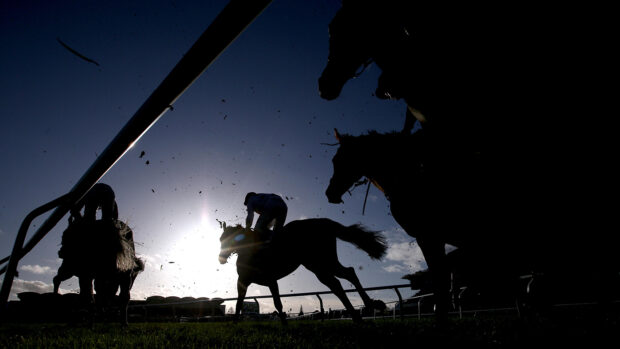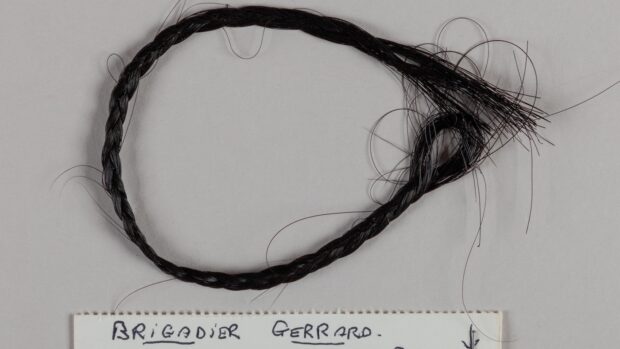
For two brief seasons on the American tracks, Ruffian dominated the competition to such a degree that she was called the greatest Thoroughbred filly of all time.
Her racing record of 10 wins from 10 starts speaks for itself. Then in her 11th and final race, tragedy struck. On 6 July 1975, Ruffian spectacularly broke down in front of a crowd of more than 56,000 at New York’s Belmont Park.
While 18 million more Americans watched on television, the filly, pitted against Foolish Pleasure, the leading colt of the era, snapped a foreleg while running as she always had, in front. She had to be put down later that night.
Foaled on 17 April 1972 at Claiborne Farm, Kentucky, Ruffian was by Reviewer, out of Shenanigans. Reviewer won nine of 13 starts but was plagued with injuries.
Shenanigans was one of Stuart and Barbara Janney’s most promising broodmares.
It was obvious from her earliest days that Ruffian would be something special. She was the biggest yearling on the farm. By her two-year-old racing season, Ruffian had the bearing and mentality of a much older horse. At maturity, she was 16.2Hh, a bay so dark that she was usually called black.
Trained by Frank Whiteley, she won her maiden race by 15 lengths, under restraint and still pulling away at the finish. Even under wraps, she equalled the track record.
She shaved 0.5 seconds off that time in her third race, and fans began to gauge her races not in terms of whether or not she won, but by how far. She ran five times that first year, winning by an average margin of nine lengths. The few fillies that did challenge her never ran quite the same afterwards.
That wonderful first racing year came to an abrupt close when Ruffian developed a hairline crack in her off-hind at the end of September, and underwent a few months of treatment and rest.
Frank Whiteley was a plainspoken man, known for conservative management of his horses. He knew that Ruffian was special driven to win in a way that few horses are and that it was up to him to see that she didn’t run herself into the ground. His instructions to Ruffian’s jockeys were typically short and sharp: “Don’t get her hurt and don’t get her beat.”
He never allowed them to ride her all-out, even in workouts. Despite this, she never won by less than two lengths, and she equalled or broke track or Stakes records in every race of her career but one.
Whiteley was worried by what he saw in Ruffian in the spring of 1975. She was even faster. She was stronger and more aggressive in her morning gallops.
Punters wondered if she could cope with a mile, then a mile and a half but they didn’t wonder for long. As the distances increased, so did her winning margins.
Ruffian took five out of five races in her big three-year-old season, winning the triple crown for fillies, the Acorn Stakes, the Mother Goose Stakes and the Coaching Club American Oaks in the process.
She needed to be tested against colts. After much wrangling among owners, the New York Racing Association and the television networks, the Great Match Race was announced, pitting Ruffian against Foolish Pleasure.
The purse of $400,000 was the largest offered for a single event in the history of American racing.
Unbeaten in six races as a two-year-old, Foolish Pleasure had just won the Kentucky Derby and run a close second in the following two races of the American Triple Crown.
The match captured the national interest “Women’s Lib” was at its peak and Billie Jean King had just trounced Booby Riggs in the Battle of the Sexes tennis match. Those in the know were betting on Ruffian/
On race day, Ruffian took the lead for the final time. But 3 ½ furlongs into the race, the jockeys heard a sound “like a board breaking”. Jacinto Vasquez, Ruffian’s jockey, frantically tried to pull her up.
As television cameras recorded every stride, Ruffian’s big heart kept her galloping until the hoof had nearly come off. The ambulance careered to the track as the crowd stared in horror. Foolish Pleasure’s jockey galloped he colt slowly to the finish in a daze, glancing back in disbelief. People were openly weeping.
Mike Pearl, a television producer who was there that day, says: “It was as if it had happened to a human.”
Despite an incredible effort from every qualified doctor and vet in the vicinity, the surgery attempted that night failed.
“It was an attempt to accomplish the impossible that would never have been tried if the circumstances were different,” says Stuart Janney III, son of Ruffian’s late owners.
Ruffian was buried the next day in the infield at Belmont Park. Some blame her tragic demise for the decline in popularity of racing in America. It was the last race that many could stomach watching.




